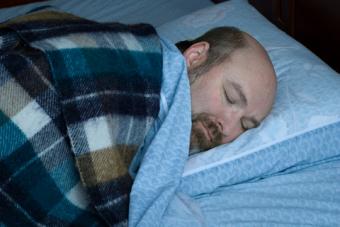
EEG tracing of bruxism has uncovered interesting connections between movement during sleep and the effects of sleep on the cardiovascular system. As you sleep, your body experiences movements, brain activity and changes in its systems, including undesirable behaviors like bruxism.
Sleep Bruxism
Sleep bruxism is a disorder that involves movements in the jaw and teeth grinding. You may recognize the symptoms of the sleep disorder if you experience:
- Jaw pain
- Tightness in jaw muscles
- Tooth enamel is worn
- Teeth are sensitive
- Teeth are flattened, have chips or fractures
- Ear pain
- Loud clenching or grinding that wakes you or your sleeping partner
EEG tracing of bruxism seeks to determine possible causes of the movement disorder and possible treatments for the condition. Among the possible causes are stress and changes that naturally occur as you sleep.
EEG Tracing of Bruxism
REM equipment can be effective in detecting movements in skeletal muscles. An electromyogram may be used during a sleep study to measure muscle activity in the jaw as the participant sleeps. An electroencephalogram (EEG) measures brain wave activity to find abnormal electrical activity in the brain.
Sensors measure brain wave activity and they can detect when a person enters the rapid eye movement (REM) cycle. EEG tracing of bruxism can determine a relationship between the stages of sleep and the nocturnal movement disorder.
Sleep Bruxism and Sleep Cycles
One study available through the National Institutes of Health, found that sleep bruxism relates to temporary arousals that occur throughout the night. Polysomnographic recordings compared the sleep structure of people with bruxism to those who do not have the condition. The study found important clues about sleep bruxism.
- Participants with the condition experienced a higher number of arousals
- Bruxism occurred equally in both REM and non-REM sleep
- Heart rate increased during episodes of bruxism
- Fewer episodes occurred during slow-wave sleep
- Episodes were more frequent during sleep stages 1 and 2
- Nearly 80 percent of bruxism episodes were related to jerking in the tibialis anterior, a muscle in the front of the calf
Breathing and Jaw Movement in Sleep
A study published by the American College of Chest Physicians notes an increase in breathing amplitude precedes sleep bruxism. Changes occur before the tooth grinding and the rhythmic movements of the masticatory muscles.
- Rise in autonomic sympathetic-cardiac activity
- Rise in EEG frequency
- Rise in suprahyoid muscle activity
The study found that the onset of bruxism also includes an increase in respiration. What implications does a tracing of bruxims using an EEG have on nighttime breathing disorders like sleep apnea?
Sleep Apnea and parafunctional Activity
Parafuncational activity includes tooth clenching, tooth grinding and bruxism that may disrupt sleep. Sleep apnea occurs when the sleeper stops breathing momentarily, which can cause arousals. A study examining the effects of sleep position in sleep apnea and parafunctional activity explores the relationship between the two sleep disorders while assessing the effects of sleep posture on each.
The study found a relationship between bruxism and obstructive sleep apnea and it found that sleep position has an effect on parafunctional activity and sleep apnea.
Bruxism and Sleep Disorders
Sleep disorders can have a profound effect on your daily life and it is important to recognize that many problems that occur during sleep may be related. Use of an EEG to trace bruxism has found relationships between arousals during sleep and parafunctional activity.
Some arousing changes naturally occur as you move through the stages of sleep, espeically during stages 1 and 2. Sleep apnea is a disorder that affects breathing, which in turn can lead to arousals. Those arousals can lead to teeth grinding and clenching.







